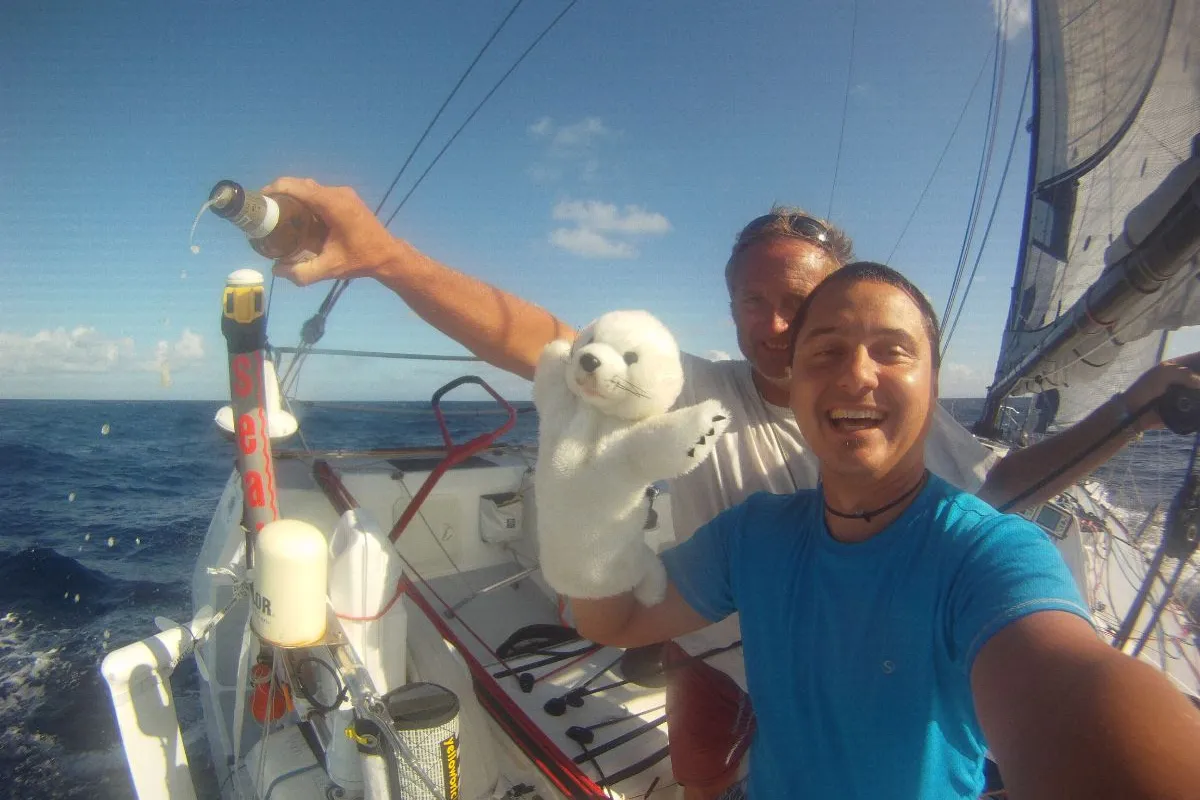Crossing the equator per se is not a difficult task, stable trade winds make the moment joyful. Tradition has it that an alcoholic drink is offered to Neptune to secure a safe journey ahead. The rite of passage is celebrated both for vessels on their first crossing as well as for sailors having never crossed “the line”. There are many and different traditions that are age-old, involving ceremonies where a senior member of the crew dresses as King Neptune and others wear colourful costumes. Uninitiated sailors are then “baptised” in one way or other. Alternative rites simply pay a tribute to Neptune by poring a drink or dropping a gift in the Ocean at the time of crossing the equator.
In a non-stop, single-handed round-the-world race by the three great capes, planning for provisions and taking into consideration nutritional needs for a journey that will last many months, requires careful thinking.
However, in addition to everyday supplies, solo sailors who embark in events like the Global Solo Challenge are likely to take with them a few treats to celebrate significant milestones in their voyage.
One of these milestones, no doubt, will be the crossing the equator. A rite of passage that all seafarers have always celebrated throughout the centuries. The moment will be significant – the time of crossing will be entered in the logbook: 00º00.000’ latitude, which will change from North to South for skippers of the Global Solo Challenge on their outbound journey.
Just before reaching latitude 0º, they will have to look out for the Saint Peter and Saint Paul Archipelago, a group of small islets and rocks, at 0º55’N and 029º20’W, which may be close to their route depending on where each skipper has chosen to cross the Doldrums.
The change of hemisphere means leaving behind the North Atlantic Ocean and sailing into the depths of the South Atlantic. Initially skippers will still be sailing in stable trade winds. The trade wind belt will no longer blow in their favour as it did in the North Atlantic from the North-East, but will instead force them to beat to the South-West towards the Fernando de Noronha archipelago into the prevailing South-Easterlies. The trade wind belt will soon give space to open South Atlantic weather. Skippers will have to study forecasts and the movement of anticyclones with their light anticlockwise winds and low pressure systems with clockwise winds. The Saint Helena high, which mirrors the Azores or Bermuda High in the North Atlantic, is the first major weather system to deal with. South of this high skippers will finally find the carousel of prevailing easterly moving low pressure systems.
At what longitude the crossing of the equator will happen depends on the strategy adopted in crossing the ITCZ or Doldrums. The belt of uncertain light winds and sudden thunderstorms is just a few degrees north of the equator, depending on the time of the year. In modern sailing, with the aid of satellite imagery and weather forecasts skippers will attempt crossing the Doldrums at its narrowest point which is usually located somewhere around 27°W but can vary. Once out of the Doldrums the natural route will take Global Solo Challenge nearly to the North Eastern corner of Brasil by the archipelago of Ferdinando da Noronha before the rotation of the fading trade winds will allow for a more southerly route.
It is too soon to “turn left” towards Cape of Good Hope and skippers will have to keep gaining to the South and well past the Saint Helena high to ensure they don’t get stuck in its vast area of light winds which can trap a boat for days.
Click here to find out more on the Global Solo Challenge
Image: Marco Nannini and Paul Peggs crossing the equator in Leg 1 of the Global Ocean Race 2011/2012
Text: Global Solo Challenge
